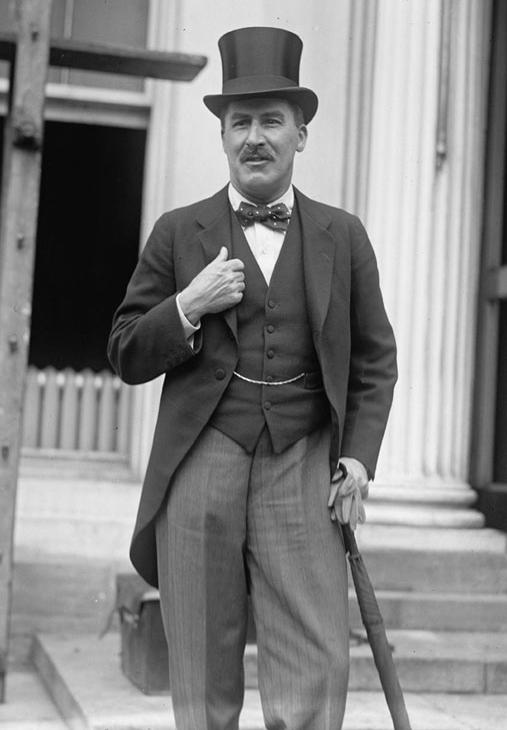Howard Carter (Howard Carter)

Scientist, Archeologist. Born in 1874 to Samuel and Martha Joyce (Sands) Carter in Kensington. He was a sickly child of humble origin having had, as a result, no old school ties to his name. He was, however, educated as an artist by his father, who was an accomplished and well-known draughtsman himself. As an infant and child, he spent many of his days at the family cottage in Swaffham, a small farming community within Norfolk. It was at the nearby mansion of the wealthy Amherst family, Didlington Hall, that the youthful Howard Carter was initially introduced to Egypt through the large collection of antiquities housed there. In about 1891, through his ties to the Amherst family, Howard Carter met Percy Edward Newberry, an active member of the London-based Egypt Exploration Fund. Newberry sought an artist to copy the art within tombs for the EEF, and it was on behalf of the recommendation of Lord Amherst that Newberry found his artist in Howard Carter. After a brief preparatory period at the British Museum, he left with Newberry to Egypt in October of 1891. At the age of seventeen, this was the first of many times he would leave his homeland for foreign territory. After his arrival at Alexandria, he began his first task at Beni Hassan. However eager he was, he was somewhat appalled to learn that mode of operation involved tracing the art of the Middle Kingdom onto large sheets of transparent parchment. These sheets were then stowed, that they might be studied at a later date. Though he frowned upon such methodology, Howard Carter made certain that he excelled at these tedious tasks. Newberry was pleased with his diligence as well as his work, and he soon found favor with him. In January of 1892, he was sent by Newberry to the camp of Flinders Petrie to learn field archaeology and excavation. Petrie, however, did not take to him right away. It was Carter’s persistence, diligence, and discoveries at El Amarna and other important places which had proven Petrie’s thoughts on Carter never becoming anything more than an artist and historian wrong. Under Flinders Petrie, Howard Carter underwent the one of the largest metamorphoses in his life: That of artist to excavator. Soon after, he was appointed as the main draughtsman and overseer at the site of Hatshepsut’s Deir-el-Bahri. Life continued to improve until, at the age of 25, he was offered the position of Inspector General of Monuments for Upper Egypt by the Director of the Egyptian Antiquities Service, Gaston Maspero. This was a most prominent position for him, as his duties included the oversight and regulation of all excavations in the Nile valley. In 1905, his position as Inspector General came to an abrupt and unfortunate end when a dispute between he and drunken French tourists erupted. When the tourists became intolerable towards others in their encampment, Carter gave his guards permission to defend themselves. The French tourists went to officials higher than Carter,including the Egyptian Consul General Lord Cromer. With the officials backing them, the French called for Carter to make a formal apology. Following his choice stubbornly, as was his nature, he refused, defending his belief that he made the right decision. The incident gave him a blemished reputation, and caused him to be posted to the Nile Delta town of Tanta, a place with very little archaeological involvement. he then resigned his services. After the 1905 occurrence his life took a downturn. He sustained for himself a meager existence through his art until about 1908, when he was introduced by Maspero to the Fifth Earl of Carnarvon. Carter and Carnarvon took to one another immediately, as their personalities were complimentary to one another. He undertook the supervision of Carnarvon’s excavations and by 1914, had secured many marvelous antiquities in his personal possession. To Howard Carter, however, his dream to unearth Tutankhamen, the 18th dynasty boy king, whose site of burial Carter believed still existed in a nearly complete state, had not yet been attained. Seasons of searching for Tutankhamen came and went. Finally Carnarvon, having lost hope and much money, suggested that they discontinue the search for Tutankhamen. Carter would not give up, and persuaded Carnarvon to hold out for one more season, beginning on November 1, 1922. Three days after the season began, Howard Carter had discovered the first step to King Tutankhamen’s tomb. Because of a late arrival by Carnarvon and the mandatory delicateness of the excavator’s work, it took the party until November 26 to finally reach the seals which had guarded King Tutankhamen in secrecy for two thousand years. Beyond those seals lay “Many wonderful things….and gold, everywhere, the glint of gold.” There were hundreds of objects within the rooms of Tutankhamen’s tomb; so numerous were the antiquities that it took a decade for Howard Carter to unearth and catalogue them all. Before the conclusion of Tutankhamen’s excavation, Carter endured many deaths, (Including the loss of Lord Carnarvon,) the media’s hype of the curse, and problems caused by government officials and the antiquity department. Once the last object was sent to the Cairo museum and the excavation of Tutankhamen was closed, Howard Carter retired to an isolated life of failing health and antiquities collecting. When he could be found in Egypt at the Winter Palace Hotel in Luxor, he avoided people and was “Sunk in gloom, talking to no one.” He returned to England and, in the presence of his niece and care taker Phyllis J. Walker, died of Cardiac Failure caused by Lymphadenoma in 1939.
Born
- May, 09, 1874
- England
Died
- March, 03, 1939
- England
Cemetery
- Putney Vale Cemetery and Crematorium
- England

